
Martin Syvertsen
gamer level 6
10455 xp
10455 xp
followers
30
30
Use my invite URL to register (this will give me kudos)
https://boardgaming.com/register/?invited_by=rangor
profile badges




recent achievements

Viscount / Viscountess
Gain 25 total followers
Gain 25 total followers

Strategist
Submit 5 game strategies (a type of game tip) and get 20 positive ratings.
Submit 5 game strategies (a type of game tip) and get 20 positive ratings.

Rated 50 Games
Rate 50 games you have played.
Rate 50 games you have played.

The Gold Heart
Give 10 Gold Hearts to games that you love.
Give 10 Gold Hearts to games that you love.

Add Games to Your Wish List! Navigate to a game page and click on the "Want It!" button
Player Stats
Critic (lvl 2)
665 xp
665 xp
Explorer (lvl 3)
1165 xp
1165 xp
Professor (lvl 2)
598 xp
598 xp
Reporter (lvl 1)
157 xp
157 xp
About Me
Mostly eurogames like Puerto Rico, El Grande, Power Grid. Boardgaming is one of the best social activities I know of, just hanging out with friends, trying to best them and enjoying some snacks and good drinks along the way is a perfect evening for me.













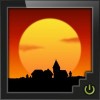
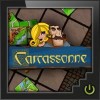


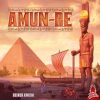
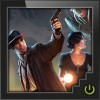
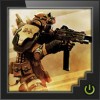




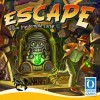



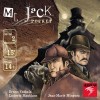










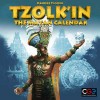













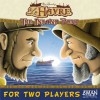
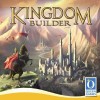

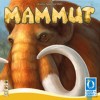
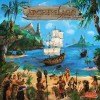






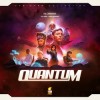










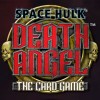




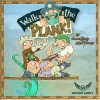




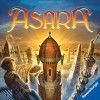
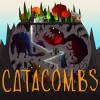






Fresco
Visiting my hometown this weekend I stumbled upon Fresco at a bargain price and since the homestead was missing some nice euro action I took a chance and purchased it on a vim. I had heard mixed things about it before, knew it was a worker placement game and also loved the theme so the bargain price pushed me over. Played a couple of rounds of the basic game, it comes with three minor expansions in the box, so this is a review of the base game as I have not played with the expansions, but I will talk a little about them as well.
The game has you play as a master painter in charge of a workforce of apprentices that are competing in restoring the bishops renaissance masterpiece fresco, a huge fresco in the ceiling of the bishops cathedral. He is expecting prominent guests soon and the state of the painting is not good, so you and other master painters are tasked to restore it to it’s former glory. You must manage your small band of workers to decide when to wake up, what paint to buy, what to restore, make money, mix paint, and cheer up spirits.
There are two main phases of each round, though it kinda feels like one big phase. First all players in turn pick a time to wake the workers, the player who is currently in last place picks first and so forth until all players have a picked a time (no two players can have the same amount of points in this game by the way). The wakeup time decides three things, who gets to go to the market and cathedral first, how much money each paint token costs and how the mood of the workers are affected. Rising up early at 05.00 AM will guarantee you first pick of paint in the market and restauration pieces in the cathedral, but you will pay the highest price for the paint and get a high mood penalty, perhaps you will even lose one worker because of low morale. Getting up late at 08.00 AM (still kinda early in my book but ok) will put you last in line for shopping and painting, but give you great prices and happy workers that may also grant you an extra worker that round. Taking a look at your current paint and money holdings, the market offering and available tiles to restore in the cathedral, are all key to picking the right time to get up, but that is off course only if you are in last place and has first pick.
After everyone has chosen a wake up time each player secretly places the workers on a action board behind a player screen. You have a small screen for the action board and a large screen for hiding paint and money. You place your four to six workers on the five different actions and must choose how many workers to send to each task. Sending only one worker to the market means you only get to purchase one paint tile, sending three (the maximum) worker to the studio to paint portraits will fetch you the most money (3X3=9), but will let you do little else that round. Deciding what your workers will do is the worker placement part of the game and it’s fun to do it in secret and simultaneously . After all players have decide you all reveal the action boards at the same time by lifting the player screens. Then all players buy paint, restore, earn money, mix paint and lift spirits of the workers in the order set by the wake up time.
Fresco feels like a easy worker placement game because even though there are things to consider and some actions require that you think a head one or more turns it’s never even close to be as complex and mind boggling as say Agricola or Tzolkin. In the base game you have three primary and three blended colors, this means you have to get some primaries, blend them and then next round you can restore pieces that require the blended colors. There are a few blended colors in the markets (the market is random for each turn) but you have to blend to get them all. There are three expansions that comes with the base game that add portraits (event cards), bishops requests (special points), more colors (more paint colors). Not having played with these cards I can’t really say what they add, but they seemingly only add more of the same really, not changing the basic mechanic of the game. The fact that these expansions come with the game and are not part of the base game is interesting as it seems the designers wanted to present the most basic game possible for new players of Fresco. It also adds a nice option of spicing up the game if or when the base game gets a little predictable or just to simple.
All in all Fresco is a nice euro worker placement game that offers some interaction with the wake your workers, choosing which stall to purchase/close and getting first pick on the restoration tiles each turn, but aggressive this game is not. It offers some nice strategic decisions and requires some light planning ahead. But for me it often feels just a little to light, this is mainly because I love and adore the brutally hard decisions required in games like Agricola, Manhattan and Tzolkin. However my brothers enjoyed the game and not having played worker placement before it was perfectly challenging enough. So as it stands now I think Fresco is a nice easy to medium worker placement game that is well suited for perhaps younger family members or friends that haven’t lost their agricolainity yet. Even though I found it simple it still required strategic choices along the way to get the most points and it’s perfectly possible that other players will block your restoration attempts. If you’re looking for a game like this then Fresco is perfect, if you are looking for a crunchy and challenging worker placement euro then you will be better served with Manhattan Project, Tzolkin or off course the mother of all (modern) worker placement games Agricola.